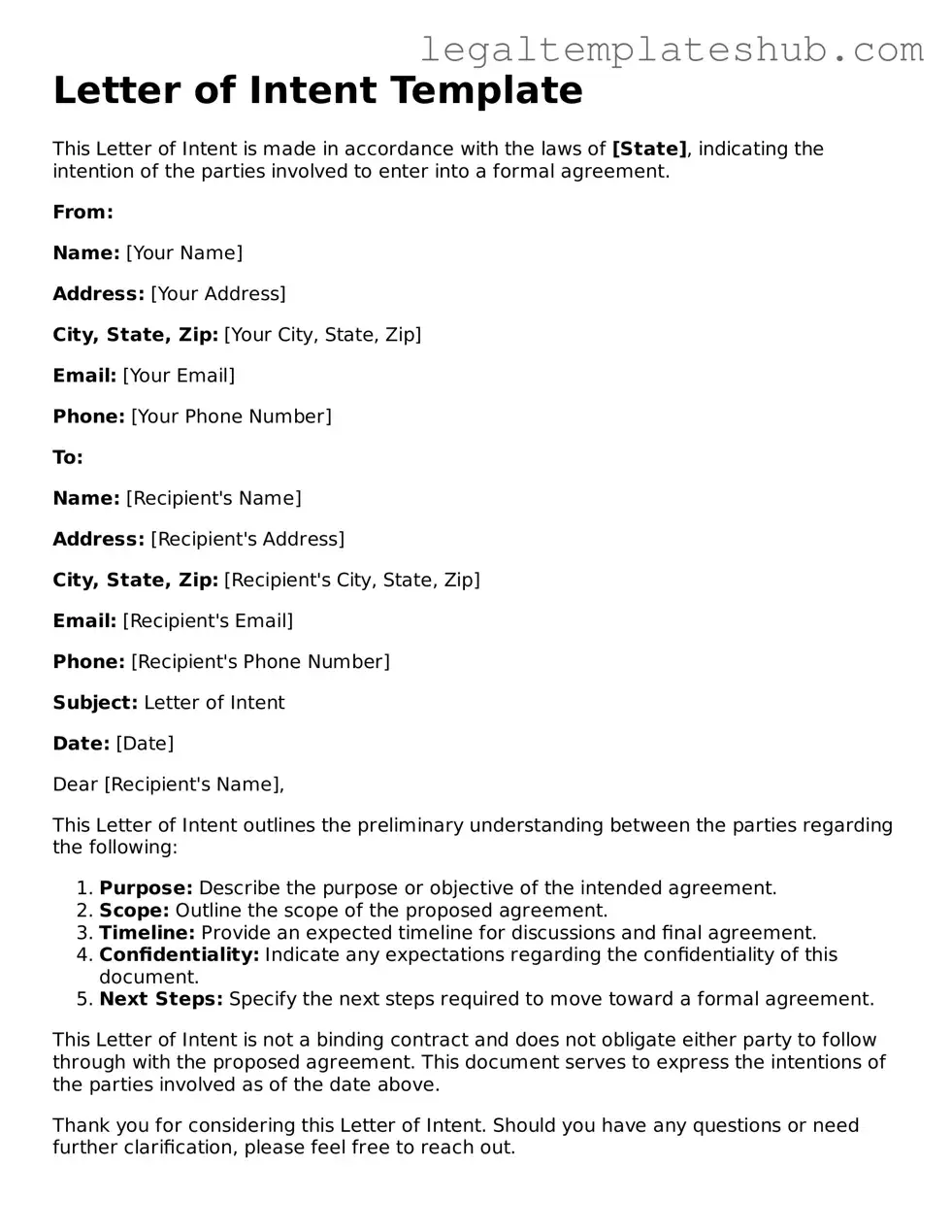Printable Letter of Intent Template
A Letter of Intent is a document that outlines the preliminary understanding between two parties before finalizing a formal agreement. It serves as a roadmap, detailing key terms and intentions while paving the way for future negotiations. If you're ready to take the next step, fill out the form by clicking the button below.
Access Editor
